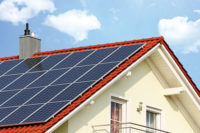Answer: You may find them in a museum or library at the same time — but not always.
And therein lies the crux of the issue. Museums and libraries were built by people to preserve these precious objects. Of course, people want to be able to look at and access these objects, perhaps even without a protective glass in between.
However, from a temperature and humidity standpoint, humans, artwork, and artifacts have distinctly different needs.
How do you minimize damage at opposite extremes?
This topic was grappled with at an ASHRAE forum on “Museums and Libraries in Historical Buildings: Can We Sustain Them with Conventional Hvac Systems?”
(Note: One attendee recommended that the society hold a forum on historical buildings specifically, covering how much modification of the internal structure is appropriate.)
Conflicting objectives
At odds in these cases are human comfort vs. material protection. Are “normal” hvac systems appropriate?There are two objectives for finer materials housed in museums and libraries in climates with cold winters:
1. Providing higher humidity; and
2. Providing well-isolated spaces indoors.
One attendee suggested the construction of two areas — an inner area with 50% rh for archival, and a surrounding area with 30% rh for areas regularly visited by patrons.
Of course, such structures in areas with warmer winters and high humidity approach this from a different direction. The ultimate goal for both is to create constant humidity levels indoors.
A consulting engineer commented that with conventional hvac, yes, you will get problems. In regular storage buildings, you’re dealing with existing infrastructure applications of traditional components in a logical manner.
Once you throw shifting numbers of visitors and the varying needs for their comfort into the mix, you’ve got potential problems for the materials being stored.
The discussion boiled down to these two questions: Can we maintain these precise requirements? Can books and people coexist?
Tolerance, control and compromise
An attendee suggested that a collection of case studies could help identify and solve problems.Another added that the American Institute for Conser-vation drew up the New Orleans Charter, a consensual document on how to balance needs.
Controlling moisture seems to be the most difficult aspect, since these buildings’ needs are fairly unpredictable. In addition to difference in construction, there is varying occupancy, and with that varying moisture loads.
“We have to keep in mind that [the goal] is the preservation of materials,” said a consulting engineer, as well as exhibits for people who fund them. “Now we have travelling exhibits,” he said, adding still another variable.
“We need to work toward methods of prioritizing and blending.”
Steady state
“If you’re doing a good job, you try to play out failure,” added another attendee. “Don’t use hydronics. Most failures are from too low and too high humidity.” The worst of those, for the materials, is low humidity.Still worse are fluctuating levels of humidity. Materials are best preserved with stable rh.
Different collections on the same floor may require different systems, pointed out another engineer. “You must work with the curator to determine tolerances. It isn’t easy.”
As in other areas of hvac, you need to work with the customer (in this case, the curator) to understand his/her needs, and be able to explain what the hvac can and cannot do.
“It’s difficult getting involved with curator’s decisions,” remarked an attendee. “How do we get them to realize that engineers should be involved in moving exhibits?”
The main point you want to get across is, try to get moving exhibits placed in areas where the hvac system is capable of meeting the materials’ needs.
One attendee suggested the use of dewpoint control-based system design. This would require the use of a dewpoint monitor, countered another; and then you have to train the museum staff how to use it.
It was finally agreed that there is no time to lose. The buildings, architects, and materials themselves are all getting older.




